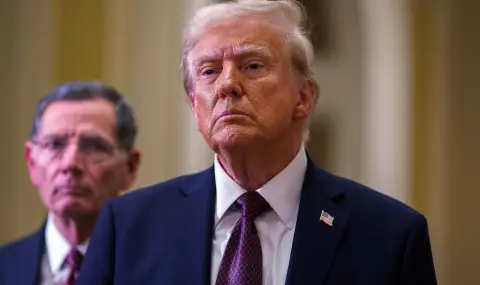President-elect Donald Trump is asking U.S. NATO allies to spend 5% of their annual GDP on defense. "They can afford it," Trump said. Is that really true?
More Than Double on Defense
That would be a huge increase from the 2% of GDP commitment that NATO allies agreed to but which has proven difficult to meet in some European countries. Trump initially demanded that the defense budget be increased to 4% of GDP, but now he is pushing for even more.
European NATO members are aware that they will have to dig deeper into their pockets to counter a potential threat from Russia. Five percent of GDP, however, seems an impossible goal in the current economic situation, even for richer countries.
He insists on 5%, but will he settle for 3.5?
The optimistic reading of Trump's demand is that it is a negotiating tactic and that NATO, as an alliance of equal partners, will reach an agreement, believes Rafael Los, a policy fellow at the European Council on Foreign Relations, which deals with security and defense in the Euro-Atlantic area.
“I think that increasing defense spending to 3.5% could be perceived as more realistic by the Europeans. But the pessimistic scenario is that Trump is serious about pulling the US out of NATO and encouraging Putin to do whatever he wants, Los said.
Trump's latest demand seemed "like a starting bet" and he could agree to less, says Jan Lesser, head of the Brussels office of the German Marshall Fund: "But even 3% or 3.5% would be unaffordable for many members," the expert believes.
Let's not forget about Russia
In December, NATO Secretary-General Mark Rutte reminded Europeans that "Russia is investing 7-8% of GDP in defense this year," and said that Europe must switch to a "military mindset" and "accelerate" its production of defense products.
He called on countries to give up part of their social welfare budgets and spend more on defense.
“European countries spend on average up to a quarter of their national income on pensions, health care and social security systems, without it being too much of a burden,” said Rutte. “We need a small part of this money to make our defense much stronger and to preserve our way of life.“
How much do the major European members of NATO spend?
According to the Alliance, no NATO member currently allocates 5% of GDP to defense. The largest spender is Poland - 4.12% of GDP, followed by Estonia (3.43%) and the United States (3.38%). Italy has set aside 1.49% of GDP for defense by 2024, which was likely a topic of discussion when Italian Prime Minister Giorgia Meloni met with Trump at his Mar-a-Lago estate.
Despite the ideological closeness between Trump and Meloni, Italy will also be expected to increase its spending, according to Leo Goretti, head of the foreign policy program at the Italian think tank “Institute of International Relations”. “At best, Meloni could extract some concessions - for example, a delay in the deadline for Italy to increase its defense spending,” he said, adding that Trump's demand puts Meloni in a difficult position.
“Italy really wants to spend more on defense, but the problem is that it has very limited resources,” Goretti said. “Social spending, especially on health and pensions, leaves little room for manoeuvre”.
The United Kingdom, one of the most militarily powerful members of the Alliance, faces the same problem. Although the country spent 2.33% on defence in 2024, and has previously exceeded the 2% mark, it has not yet reached its self-imposed target of 2.5%. Increasing this level to 5% looks particularly difficult, as the government has promised costly social improvements, including to the health system and new housing.
France and Germany are facing political turmoil over their economies, and far-right groups sympathetic to Russia are on the rise. In 2024 France has allocated 2.06% to defense, and the current political turmoil is undermining the country's defense plans.
Germany: Spending should be determined by needs, not GDP
Germany, which is due to hold snap elections in February, spends 2.12% on defence. Any further increase is sure to be controversial. During his first term, Trump explicitly called on Germany to increase defence spending. German Chancellor Olaf Scholz said the alliance has a “regular procedure” to determine military needs and added: “It is important that we are together and act united on these issues”.
Scholz's main rival in the upcoming German elections, Friedrich Merz, called spending targets as a percentage of GDP outdated: “2%, 3% or 5% are essentially irrelevant: “It is crucial that we do what is necessary to be able to defend ourselves”, Merz told German public television.
Will the higher budget go to European or American equipment?
According to analysts, long and difficult negotiations are ahead between the future US administration and its European allies, but spending more money could lead to a compromise.
If Trump presses them to reach 5%, they could spend most of the money by investing in the European defense industry. And there is another option - a larger share of defense funds to be allocated to American manufacturers.
Author: Anshal Vohra
